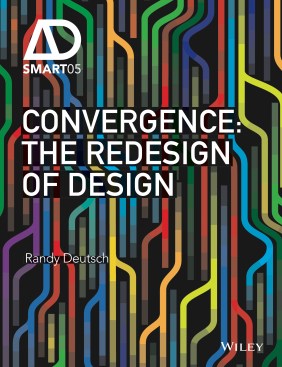Randy Deutsch reckons that in the years before he wrote Convergence: The Redesign of Design (Wiley, 2017), he heard again and again from industry experts that “things in the AEC industry were converging, without [anyone] alluding to why or how or what that meant. When I hit the thousand mark, I said, ‘I’m going to have to write about this.’ ”
Convergence explores how today’s software design tools, particularly Building Information Management (BIM), are enabling architects, contractors, and other team members to share and contribute to one digital model, reducing inefficiencies and encouraging collaboration. Deutsch is an architect and clinical associate professor at the School of Architecture at the University of Illinois at Urbana-Champaign. He imagines a future in which the boundaries between the design and construction industries have not only blurred but vanished. “It’s not just that things are speeding up, but that they are moving toward each other: they’re converging,” he writes. “The operative word is connection: the connecting of experts to move projects forward faster.”
ARCHITECT spoke to Deutsch and outlined five of his book’s most significant themes.

Wiley
More Time For Intuition
As architects move into a more data-driven realm, will creativity decline? Deutsch doesn’t think so. Instead, he writes, quick access to data “eliminates paths that don’t lead anywhere …The beauty of gathering and leveraging data in building projects is that it enables designers to save time and valuable resources by eliminating false positives.”
In the past, Deutsch says, data versus intuition was an either/or proposition: two different ways to go about design. Now, he says, “We have both. The feedback we get in BIM or in other computational tools both informs our intuition and at the same time improves it. I think there’s a concern that with the focus on technology that architecture will become too rational and machine-like. We need the art and intuition, but we also need the data to back up those insights.”
Souping Up Software
When automobile culture was at its height in the 1950s and ’60s, it was common for car enthusiasts to tweak their engines in order to gain an extra bit of speed. Deutsch believes that today, we’re witnessing a similar phenomenon when it comes to young designers and design software. “Due to curiosity and impatience, but also to self-empowerment, these emerging pros can take software matters into their own hands,” Deutsch explains. “I think that’s a really important thing we’ve never seen before. Instead of waiting to see if your wish list will be included in next year’s software, they create their own tools and add-ins and plugins.”
Among the examples Deutsch cites are the openBIM plug-in Geometry Gym for Rhino, Grasshopper, Revit, Tekla and Navisworks by Jon Mirtschin; LunchBox, a set of computational design tools/plug-ins for Grasshopper and Dynamo created by Nate Miller of Proving Ground; and Ladybug and Honeybee, open-source environmental plugins for Grasshopper 3D by Mostapha Roudsari.
Beyond Integrated Design
Many things have fostered increased collaboration among architects, builders, and other subcontractors: the attempt to build more energy-efficient buildings, for instance. But Deutsch says convergence is a fundamentally different mindset. “Convergence ignores boundaries,” he writes of project team members and their roles, “whereas integration just moves them.” As an example, the author cites two projects by the Toronto-based firm Partisans: the Bar Raval and Grotto Sauna (both completed in 2016). “Their design process could be described as more emergent than linear or integrated,” he explains.
Deutsch believes that less hierarchical future will be empowering to millennials and younger workers. “Anytime you’re working on interdisciplinary teams, your titles are less important,” he explains. “In that environment, it doesn’t matter where the idea comes from. Everybody is working for the project. You’re able to let go of the titles and the specific roles you have. I think the current generation really values that: They want the opportunity to be able to chime in.”
Wiley
More Mergers
Will the future bring more hybrid firms, such as combined architecture-construction firms? Deutsch thinks so. While he cautions that convergence is separate and different from consolidation, he says that “it is important to point out that mergers and acquisitions inform one another and therefore serve as a factor that brings about convergence, in that they ease access to information and resources.”
Even if some firms don’t join the merger bandwagon, they can still enjoy the benefits of convergence: “You can work on flexible teams and get that same kind of experience.”
Replaced by Robots?
Convergence imagines a future increasingly given to generative design, where architects set the desired architectural outcomes and parameters, but then allow the software to create a variety of design options. “We are at the edge of [a] new era where computation is no longer a tool to support or aid the design process, but rather where computation becomes itself a method for design,” Deutsch writes.
Yet he also cautions that architects needn’t fear for their jobs. “I think generative design tools play a good role,” he explains, “but I don’t think it’s the machines or the robots taking over. I don’t see that happening anytime soon.”